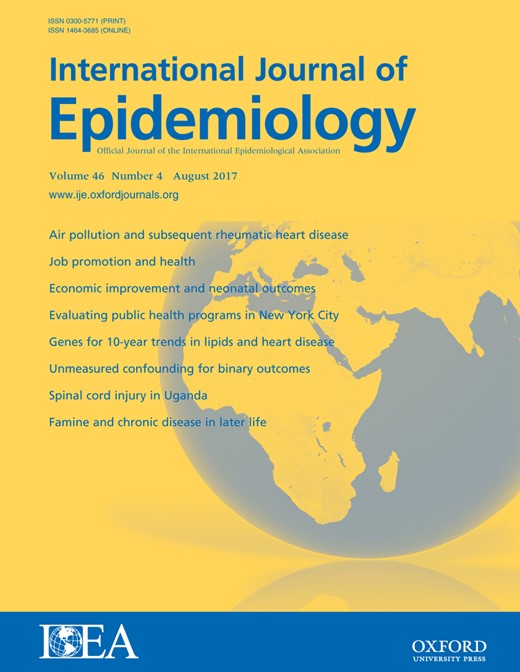-
PDF
- Split View
-
Views
-
Cite
Cite
O Lundberg, Commentary: A multi-factorial and dynamic approach to health inequalities–lessons from Marmot’s The Health Gap, International Journal of Epidemiology, Volume 46, Issue 4, August 2017, Pages 1332–1333, https://doi.org/10.1093/ije/dyx101
Close - Share Icon Share
Michael Marmot’s book, The Health Gap: The Challenge of an Unequal World,1 combines autobiographical notes with epidemiological and other scientific evidence, topped with moral concern. It examines the scientific arguments on the generation of health inequalities and how they might be addressed. It also shows Marmot’s ‘trademark’ energy and profound determination to contribute scientifically to policy making.
The book covers scientific knowledge, ranging from the social stratification of societies to biological processes. Much is based on work by the Commission of Social Determinants of Health (CSDH), the English Marmot Review and the Review of Social Determinants and the Health Divide in the World Health Organization (WHO) European Region - all led by Marmot. These major undertakings involved a broad range of subjects and scientific fields which Marmot draws on and elaborates.
In an era when scientific research is becoming more and more specialized, this book demonstrates the value of a more broad-reaching, multidisciplinary approach, ranging from philosophy and social sciences to epidemiology and medicine. Evidence and arguments from many fields are forged into a bigger story. Some general lessons can be drawn from this key feature of the book for, in particular, research in social epidemiology and public health.
One such lesson, both in research and in policy making, is the need to see the generation of inequalities as a dynamic, multi-causal process. Inequalities grow out of a dynamic interplay of many factors and conditions during the entire life course. Conditions during early life are crucial. Hence, inequalities of all sorts start within the family. It is, therefore, important to offer good quality pre-schools, in particular to children from homes with fewer resources. However, it does not stop there. Schools can amplify the differences which children bring from home, but can also help level out inequalities. Working life, incomes and a range of other living conditions are important, not just individually but combined, added and in constant interplay.
This crucial and fundamental approach is the foundation for Marmot’s thinking. To many of us, it might seem self-evident that health inequalities arise from a multitude of differences in living conditions and life chances but, as a scientific statement, it is quite bold. This is partly because science usually enquires into the finer details and refrains from painting the bigger picture. But in public health sciences, there is also the tendency to end up in dichotomies: ‘upstream or downstream?’, ‘psycho-social or neo-material?’, ‘structural or behavioural?’ Such dichotomies are at odds with the complex picture Marmot draws; each time Marmot faces such a dichotomy, he rejects it as false. And rightly so–the key to understanding the dynamics of inequality is discovering the complexity of factors and how they interplay.
We have used this key insight in the work of the Swedish Commission for Equity in Health, which I have led.2 From both a scientific and a policy point of view, we suggest, it is unproductive and unrealistic to argue about whether it is individual decision making or structural conditions which create inequalities, since it is obviously a combination. In particular, in advanced welfare states such as Sweden, we will not get much further if we don’t realise that we must work with both social structures and individuals, as well as with their interactions. For example, the fact that tobacco taxation and higher prices appear to be the best way to reduce inequalities in smoking3 does not mean that individual counselling or treatment should be abandoned.
However, a dynamic, multi-factorial and interactive approach is more difficult to handle. In research it will be more demanding, both theoretically and empirically, than any single-factor enquiry. In politics, with limited resources, the whole complexity cannot be managed fully and therefore prioritization is inevitable. But such prioritization would benefit from scientific underpinning to which we researchers, if we stick to just one end of the dichotomies, can never contribute. Herein, I believe, lies an important lesson from Michael Marmot.
But this lesson also extends to other research fields and other social problems. The challenges linked to climate change, globalization, migration and inequalities more generally, both between and within countries, are complex. Scientific contributions are needed to handle these problems, but those contributions must grasp the complexity of the problems.
A key future issue, then, is how we best encourage, support and value such more general and interconnecting research. Science certainly needs people who go into detail and dig deeper, but it also needs people able to bring the pieces together to form a coherent, large picture. In particular, for multidisciplinary fields like social epidemiology, there is an urgent need for both types of research workers. I fear, however, that we are getting more of the former and fewer of the latter. Without those ‘general specialists’, we will face a 10 000-piece jigsaw puzzle without knowing the pattern. Most crucially, we must put enough effort into training and encouraging younger researchers to become ‘general specialists’. Otherwise, where will the next Marmot come from?
Conflict of interest: None declared.



